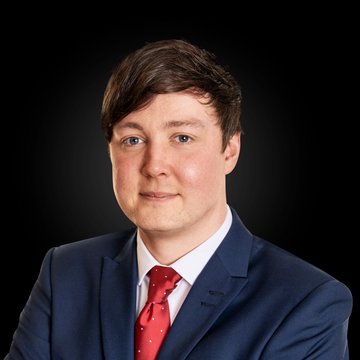Driving under the Influence: Determining the Breath Alcohol Level
“Driving under the influence” and vehicle immobilization are hot topics of discussion: Measurement apparatuses in automobiles are designed to lock the ignition when the driver’s alcohol content is too high. It is not until the driver is able to blow an acceptable level into the “alcolock” breathalyzer that the motor can be started.
In Germany, data privacy activists are demonstrating against this measure, but Swedish employees are already being required – by employee contract – to utilize these measuring units [1]. In France, there has also been an attempt to initiate this measure: since the summer of 2012, every automobile has to have a breathalyzer on board; however, this finable regulation was repealed in the beginning of 2013 [2].
Alcolock Retrofitting
Beyond Borders
“Alcoguard” ignition locks can be ordered with Volvo as a special option; they even have a wireless version. Other car manufacturers offer vehicle immobilizers as a retrofitting package. The measurements are always based on breath alcohol content.
Austria is discussing offering this retrofitting package as part of a probation model – in lieu of license revocation – by the end of 2017. This model has apparently been successful in Finland. Repeat offenses have been reduced by 2/3 with the integration of the alcolock [3]. Australia also introduced this system in 2015.
“Breathe!”
Breathalyzer as Opposed to Blood Sample
Beyond Borders
Alcohol consumption can be detected in the blood: reabsorbed ethanol enters the bloodstream through the oral mucous membrane, the stomach, and especially the small intestine. In the lung alveoli, there is an exchange of gas between the alcohol from the arterial bloodstream and the air breathed; therefore, alcohol consumption can be determined via breath gas analysis. It is even possible to determine the concentration of alcohol because there is a physiological correlation between the breath alcohol content (BrAC) and the blood alcohol content (BAC) (Henry’s law: average partitioning factor of 1:2100).
Because an exact conversion depends on many influential factors and is, therefore, not legally watertight, German jurisprudence introduced two limits: one for blood alcohol content and one for breath alcohol content. This is based on a conversion factor of 1:2000, which favors the breath alcohol content measurement. Thus, the following applies: 0.5 ‰ BAC = 0.25 mg/l BrAC
And this is how breath alcohol content is measured…
Beyond Borders
In the measurement of breath alcohol content (BrAC), the ethanol content is determined per liter of breath gas in the unit of mg/L. “Conclusive” breathalyzers offer two independent measurement methods in a unit and combine an electrochemical sensor and an infrared sensor.
Electrochemical Sensor
Beyond Borders
In the electrochemical detection of alcohol, the current produced in the chemical conversion of ethanol is measured.
An electrolyte and at least two opposing electrodes are located in a measuring chamber; these electrodes are connected to an ammeter. A defined air volume is blown into the measurement cell: If ethanol can be detected, a measurable current is produced via a redox reaction: one reaction partner is oxidized (i.e., it releases electrons) and the other is reduced (i.e. it absorbs electrons). The current flow produced in the chemical reaction is equal to the alcohol concentration.
One problem with electrochemical sensors is the measurement accuracy, which is reduced with increasing operating hours.
IR Sensor
Beyond Borders
The easiest method is to use so-called non-dispersive infrared (NDIR) sensors to detect gases. In this method, a measurement cell is irradiated with infrared light, which is collected on the opposite side by a detector. Narrow bandpass filters (interference filters) are mounted in front of the detector.
Gases have characteristic absorption lines that make clear identification possible with the help of absorption spectroscopy. Even the gas concentration can be determined. The Lambert-Beer law, which describes the correlation between a reduction in the beam intensity and the concentration, applies here. Simply put, the light intensity at the detector is reduced, the more alcohol is found in the chamber. This system exhibits long-term stability.
[1] www.zeit.de/auto/2011-04/alkoholtest-fahren
[2] www.ambafrance-de.org/Nichtmitfuhren-eines-Alkoholtests
[3] www.ace.de/presse/medien-service/grafiken/datei/factsheet-alkohol-im-strassenverkehr.html? eID=nfcmedialibrary&tx_nfcmedialibrary_pi1 %5Bdownuid%5D=27957
[3] www.tt.com/panorama/unfall/11643807-91/alkolock-darf-kein-privileg-f%C3%BCr-reiche-sein.csp
A Glimpse into the Future
Beyond Borders
Driven by the automobile industry, very different methods of measuring alcohol levels and integrating these methods into automobiles are currently being discussed. In addition to the established methods already introduced, laser-based approaches are also being tested. Standard fitting in automobiles is being tested through research programs in the U.S.A.
Creative approaches are also being sought for the measurement apparatuses as well: Instead of a mouthpiece, breath gas can be used for direct measurements. The major challenge to this approach is in all certainty being able to identify the actual driver to exclude fraud. In Australia, camera systems and measurements are currently being combined to properly identify the driver.
Our Experts
Beyond Borders

LASER COMPONENTS UK - Your competent partner for optical and optoelectronic components in the United Kingdom.
Welcome to LASER COMPONENTS UK Ltd., your expert for photonics components. Each product in our wide range of detectors, laser diodes, laser modules, optics, fiber optics, and more is worth every Pound (£/GBP). Our customized solutions cover all conceivable areas of application: from sensor technology to medical technology. You can reach us here:
Goldlay House, 114 Parkway
Chelmsford Essex CM2 7PR
United Kingdom
Phone: +44 1245 491 499
Email: info(at)
